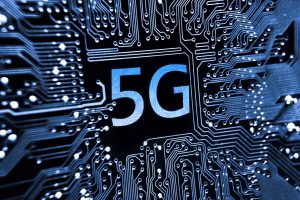 The 5G manifesto is essentially an open letter signed by 17 telcos, equipment vendors and satellite operators across Europe and sent to European Commissioner for Digital Economy and Society, Günther Oettinger, in July 2016. This manifesto makes recommendations on how the EU can support 5G deployment, as well as timelines for 5G commercial deployment. Industry in Europe needs to lead the deployment of standardised 5G networks from 2020. In this article, we attempt to bring you an outline of the 5G Manifesto and what it means to 5G device manufacturers and application developers and operators needing to test and benchmark on state-of-the-art infrastructure.
The 5G manifesto is essentially an open letter signed by 17 telcos, equipment vendors and satellite operators across Europe and sent to European Commissioner for Digital Economy and Society, Günther Oettinger, in July 2016. This manifesto makes recommendations on how the EU can support 5G deployment, as well as timelines for 5G commercial deployment. Industry in Europe needs to lead the deployment of standardised 5G networks from 2020. In this article, we attempt to bring you an outline of the 5G Manifesto and what it means to 5G device manufacturers and application developers and operators needing to test and benchmark on state-of-the-art infrastructure.
Here is an excerpt from the 5G Manifesto: “5G has the potential to deliver substantial performance and capacity improvements…and to provide a suitable communication solution basis for many vertical applications…5G is about the seamless interworking of different network technologies, mobile, fixed as well as satellite, and their co-existence within a common infrastructure of standardised and customer specific networks or IT functionalities, designed to fit vertical industries as well as consumers to broaden digital inclusiveness.”
It is expected that vertical industries and the public sector will bring new and innovative solutions to market by harnessing 5G services such as enhanced mobile broadband, massive machine type communications and ultra-reliable and low-latency communications, as currently being standardised within 3GPP and ITU. Examples of vertical industries are transport, logistics, automotive, health, manufacturing, energy, media, entertainment and public sector includes smart cities, public safety and education.
5G is expected to deliver enhanced levels of service assurance and guarantees to cater for specialised use-cases via virtual “network slices”. 5G network slices will run on shared infrastructure without affecting agreed levels of service. Economy of scale is preserved by using a common network infrastructure to ease cross-sector innovation, ultimately improving the competitiveness of the European economy.
The following 5G use-cases are considered in the Manifesto:
- Demonstration of the concept of 5G network virtualisation (slicing) to accommodate specific needs or business models with enhanced levels of service assurance and guarantees.
- Connected automotive scenarios, including ultra-broadband infotainment, safety applications and automated / autonomous driving across motorways in Europe.
- Connected eHealth scenarios that can spark Healthcare innovation and business transformation across the continuum of care, keeping Healthcare affordable to citizens and government (and tax payers).
- Reliable, high capacity broadband connectivity in connected planes, railway and high-speed transportation across Europe, and transport and logistic networks with multimodal cargo (truck, rail, shortsea, barge, plane/drone).
- Public Safety use-cases providing security, reliability and real-time broadband connectivity for key events involving large audience, for example at European Soccer Championship 2020.
- Smart grids: ensuring networks stability and coordinating energy distribution from diverse sources (e.g. wind, solar, power-plant) and different regions.
- Smart City use-cases including connected bus shelters, real-time traffic monitoring and analytics, crowd management, smart homes, ageing population, augmented reality for tourism and advertising.
- Media and entertainment use-cases, including the integration of satellite and terrestrial network services, demonstrating the power of multicast and caching for delivering a cost-effective and scalable user experience anywhere in Europe (e.g. at the Glasgow-Berlin European Championships in 2018 and European Soccer Championship 2020), as well as immersive video scenarios showcasing the benefits of 5G capacity enhancements.
These use-cases call for a flexible and elastic configuration of resources in networks and platforms, on a continuous basis, depending on demand, context and the nature of the service.
The TRIANGLE testbed is part of the move to deliver a successful 5G by delivering a testbed on which to benchmark mobile 5G devices and applications as well as recommending standards to GFC and 3GPP standards bodies.
5G is expected to require significant investments over time, including a new radio access layer, high bandwidth backhaul links, core network upgrades and, for certain scenarios, increased densification of cell sites. TRIANGLE provides the ability to test ahead of this rollout using 5G radio access.
Bearing this in mind we are seeking 5G device manufacturers and application developers and operators looking to test and benchmark new services on the TRIANGLE testbed. We have had two successful open calls to fund both testing of applications and devices and testbed extensions in 2016 which will shortly commence their testing in 2017. We will have a further two calls this year and next looking to fund such 5G testing and help companies get benchmarked and ready for 5G service launch from 2020 onwards. Why not contact us and be part of the next wave of funding?

